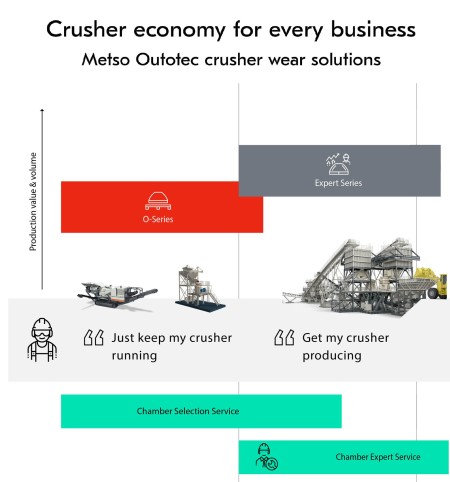
Crusher wear parts
No two sites are the same. Whatever the scale of your crushing, you need wear parts that suit your demands, services to keep your operation running, and expertise that helps you develop your crusher economy; to extend liner wear life, increase operational efficiency and improve profitability.

When dealing with crushers, whether they’re jaw crushers, cone crushers, or impact crushers, understanding the wear parts and spares is crucial for maintaining performance and extending the equipment’s lifespan. Here’s a breakdown of the common wear parts and spares for each type of crusher:
Jaw Crushers
Jaw Plates: The most critical wear parts. They come in different profiles (e.g., smooth, ribbed) depending on the application.
Toggle Plates: Help in absorbing the impact and transferring the force from the jaw to the frame.
Side Liners: Protect the sides of the crusher from wear.
Cheek Plates: Located on the sides of the crushing chamber.
Wedges and Hydraulic Wedges: Used to adjust the gap between the jaw plates.
Cone Crushers
Mantles: The part that moves in a circular motion to crush the material against the bowl liner.
Concaves/Bowl Liners: Fixed liners that work with the mantles to crush material.
Spider Bushings: Support the spider assembly and help reduce friction.
Main Shaft Sleeves: Protect the main shaft from wear.
Thrust Bearings: Support the movement of the main shaft.
Impact Crushers
Blow Bars: Striking tools that impact the material. They can be made from different materials like high chrome or manganese steel.
Impact Plates: The surfaces that the blow bars strike against.
Side Liners: Protect the sides of the impact chamber.
Rotor Components: Include the rotor itself and any associated parts that impact the material.
General Spares
Bearings: Critical for smooth operation of rotating parts.
Seals and Gaskets: Prevent leakage of lubricants and dust.
Hydraulic Parts: For crushers with hydraulic systems, including pumps, cylinders, and hoses.
Drive Belts: Transfer power from the motor to the crusher.
Maintenance Tips
Regular Inspection: Frequently check wear parts and replace them before they cause damage to other components.
Proper Lubrication: Ensure that bearings and other moving parts are well-lubricated to prevent excessive wear.
Monitor Performance: Keep an eye on performance metrics to detect any issues early.
Having a good inventory of these wear parts and spares, along with a proper maintenance schedule, can significantly reduce downtime and improve the efficiency of your crushing operations.


